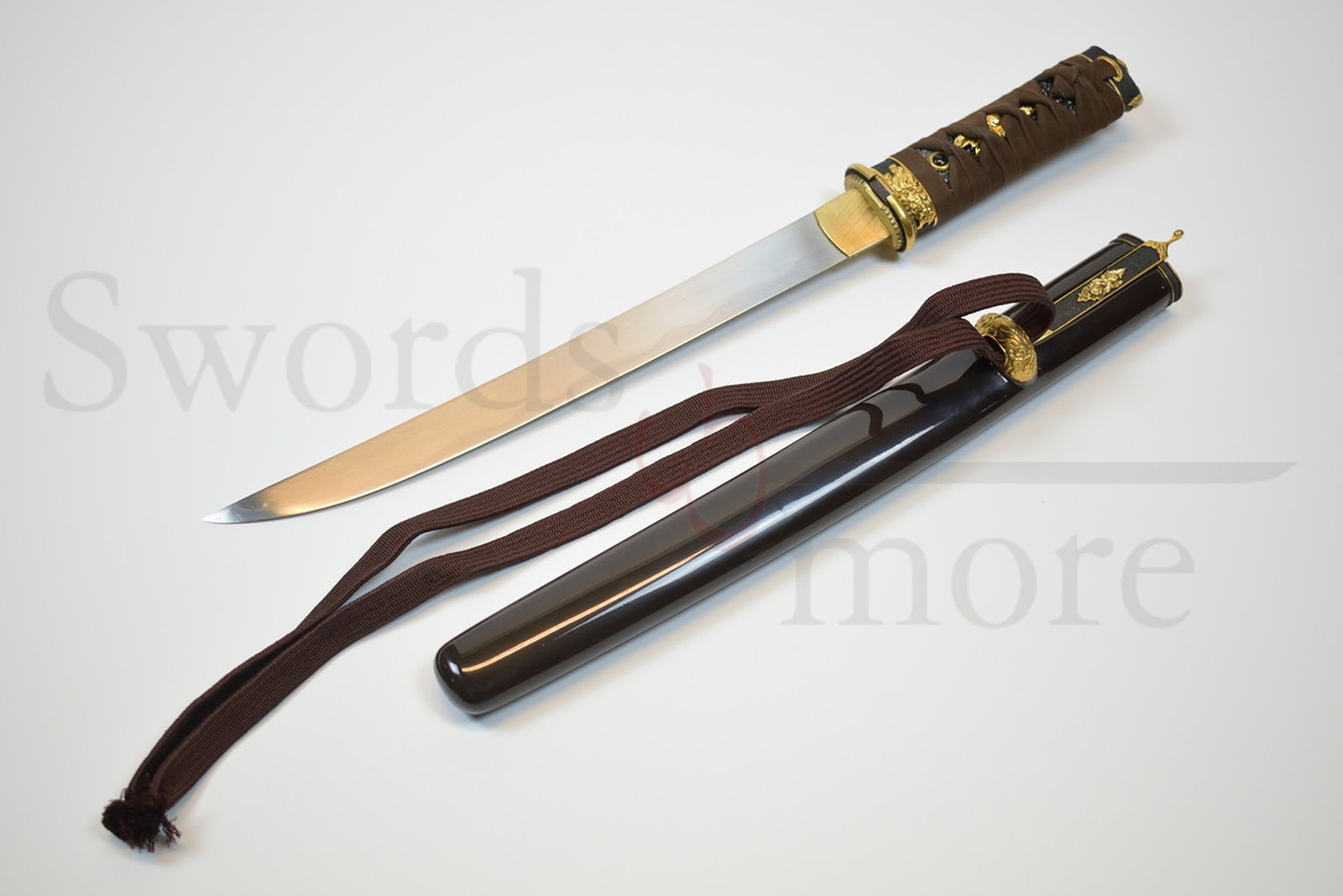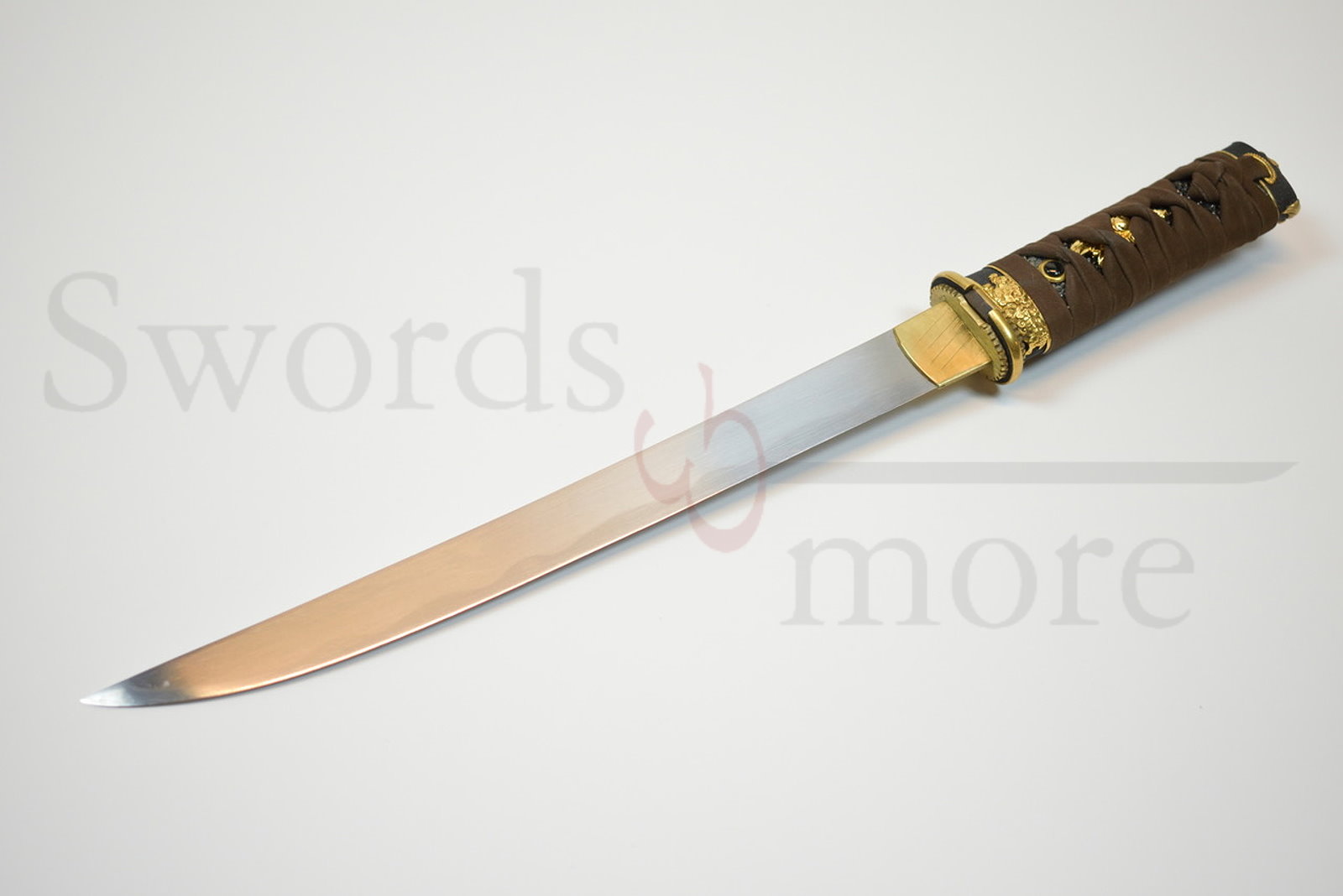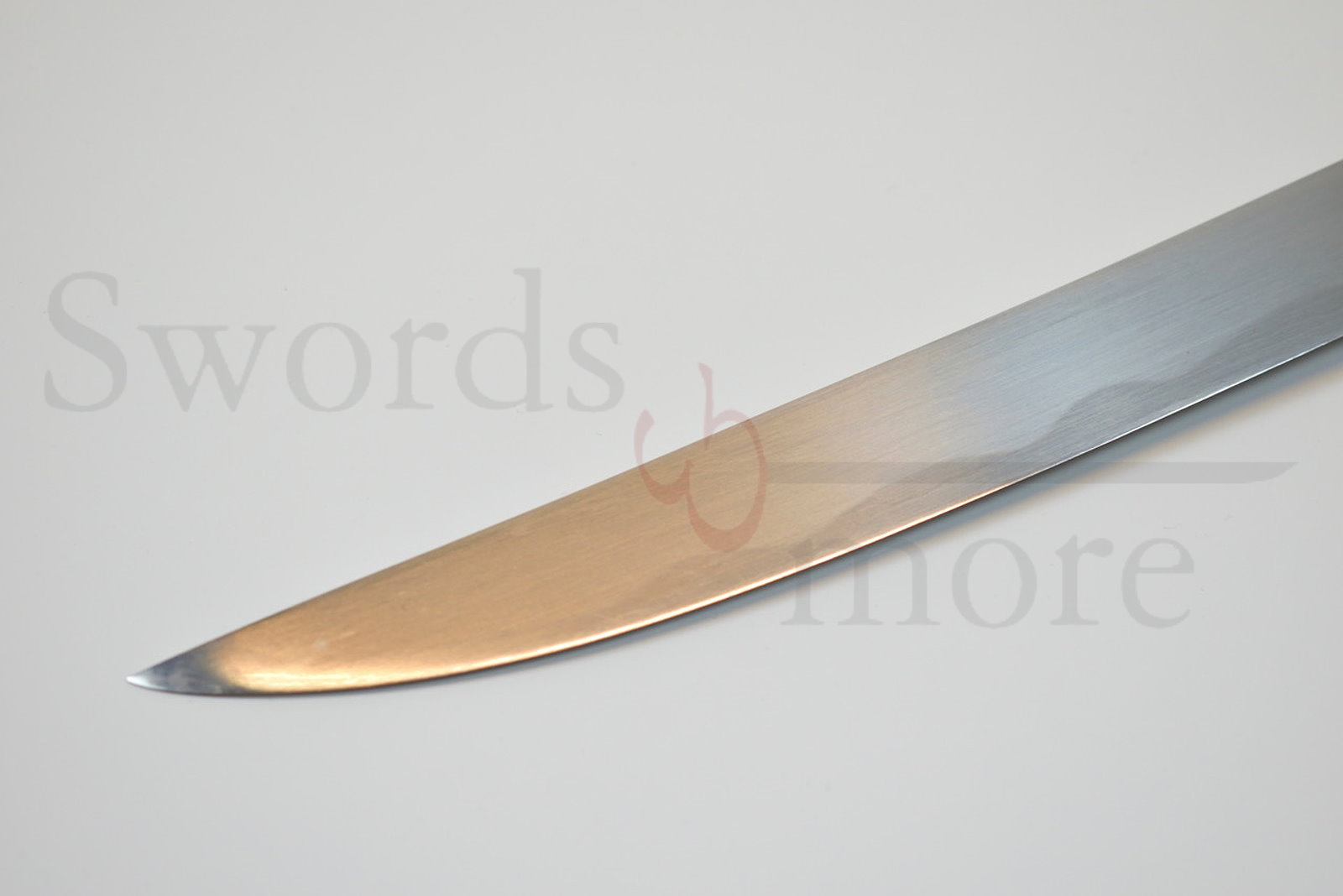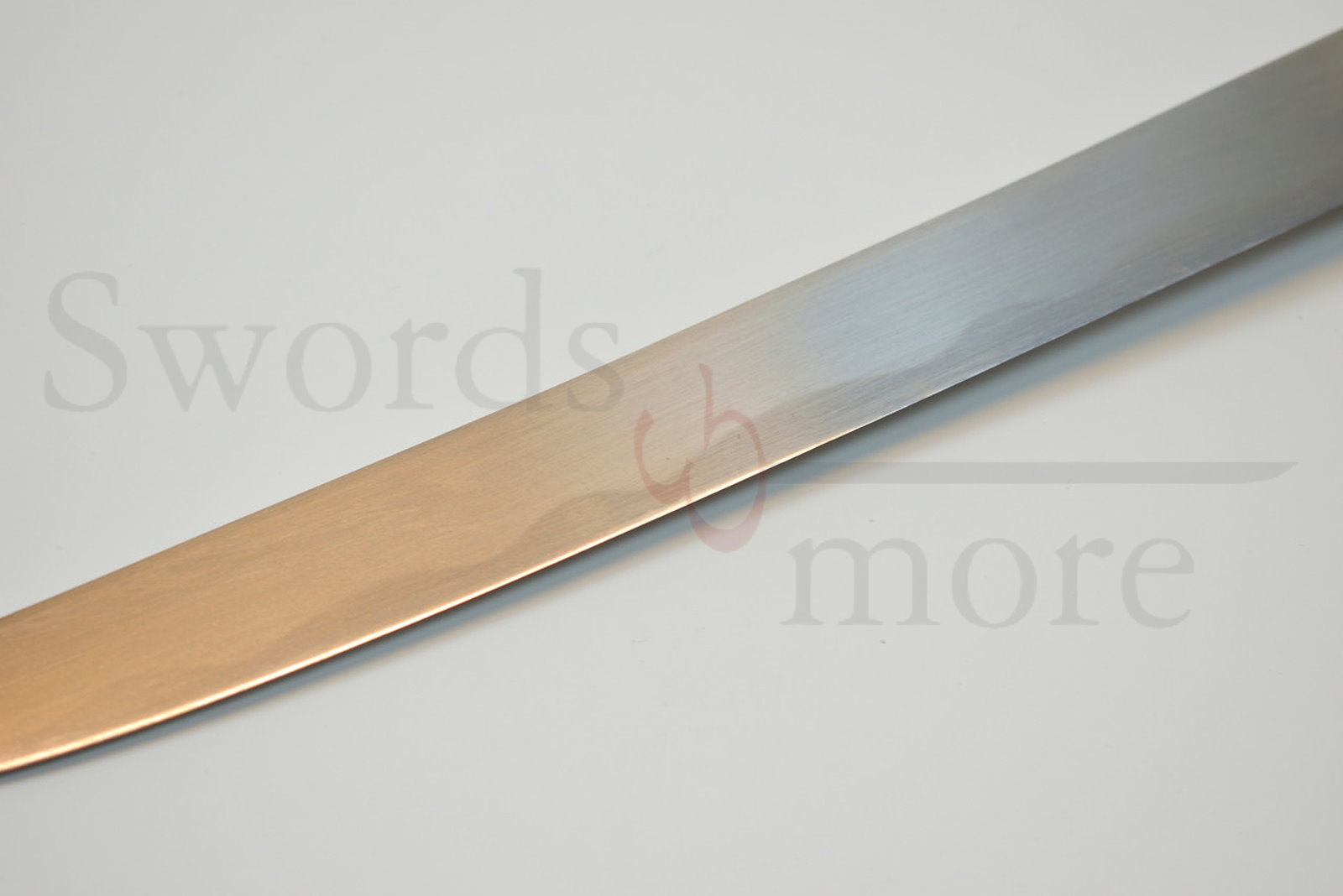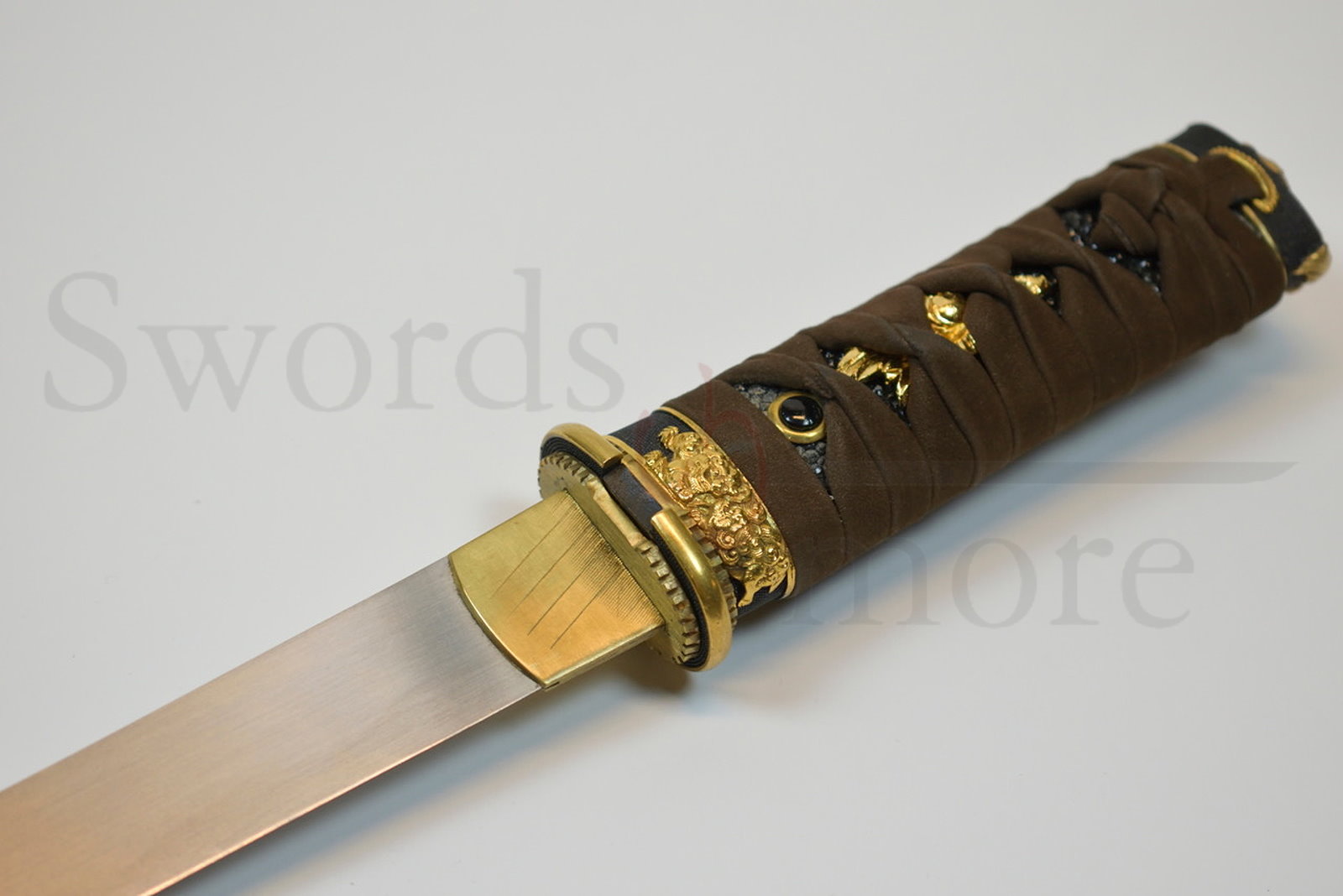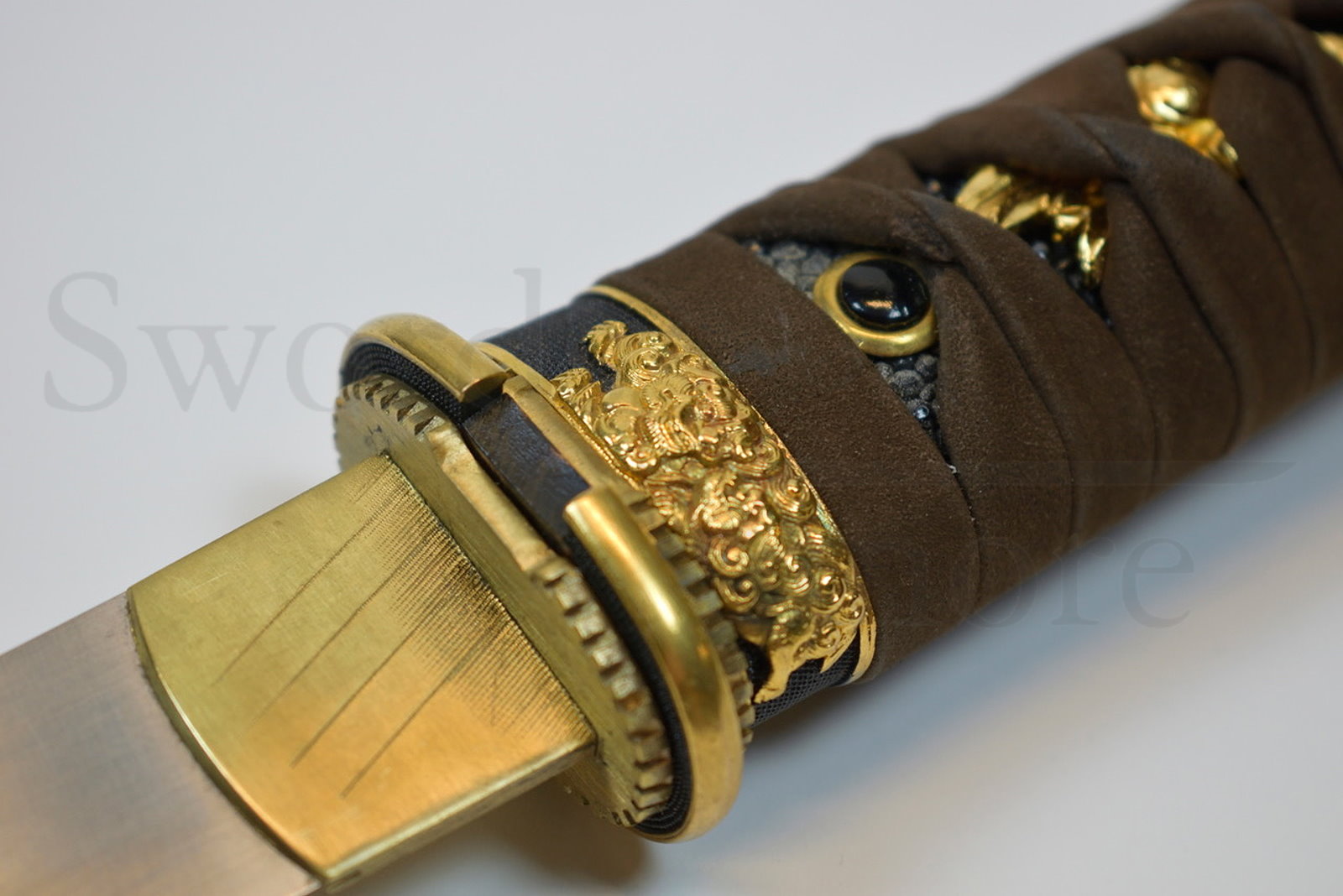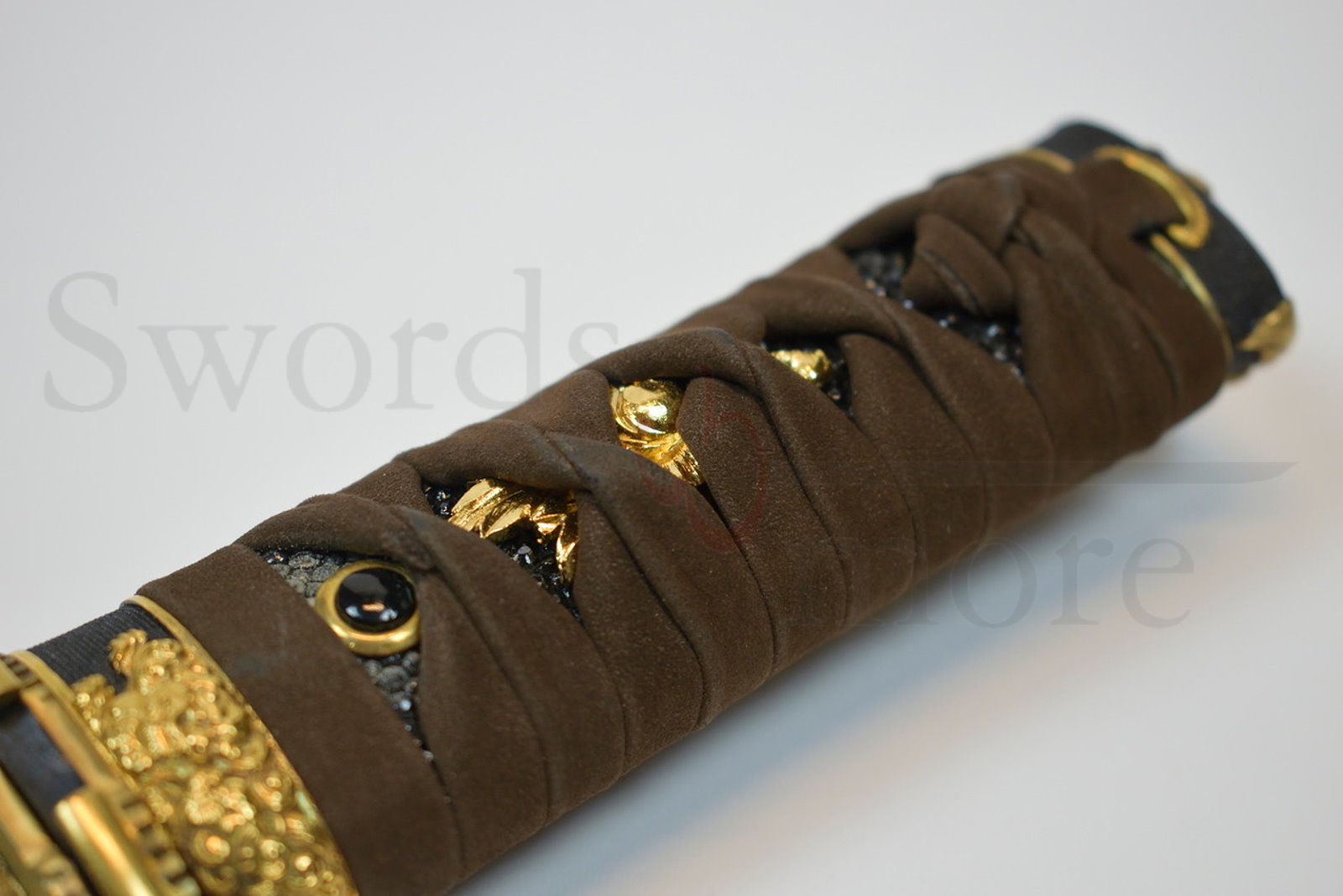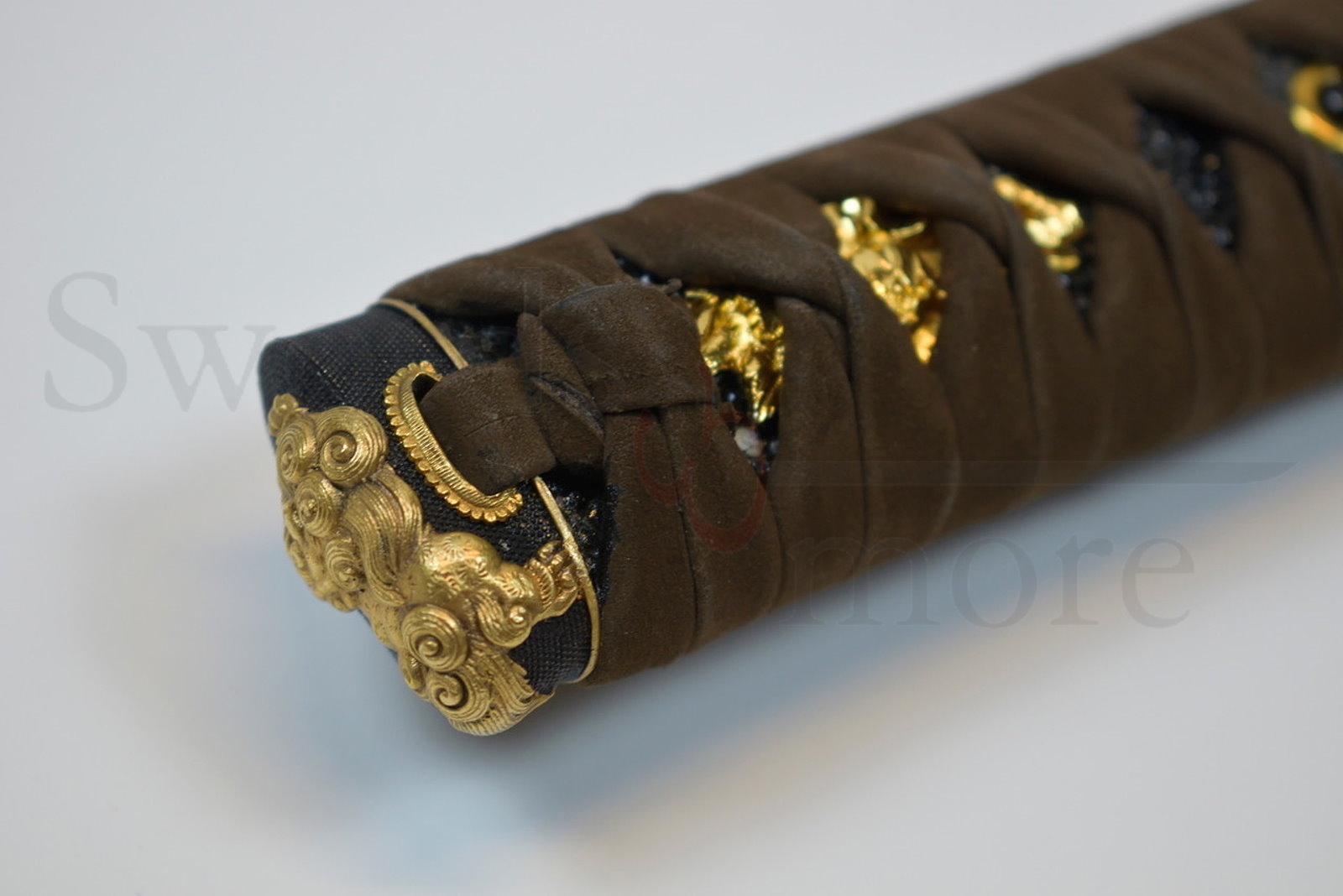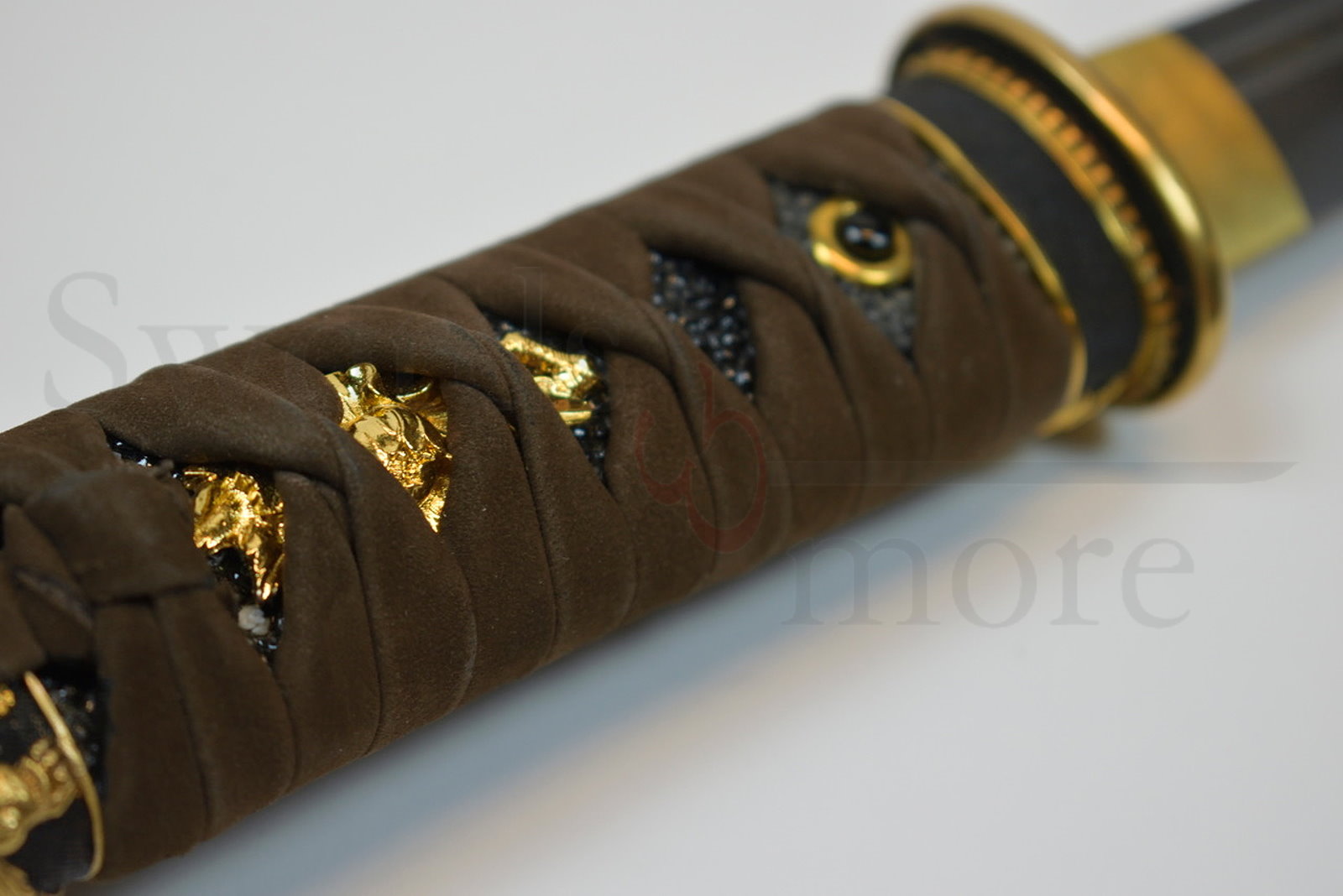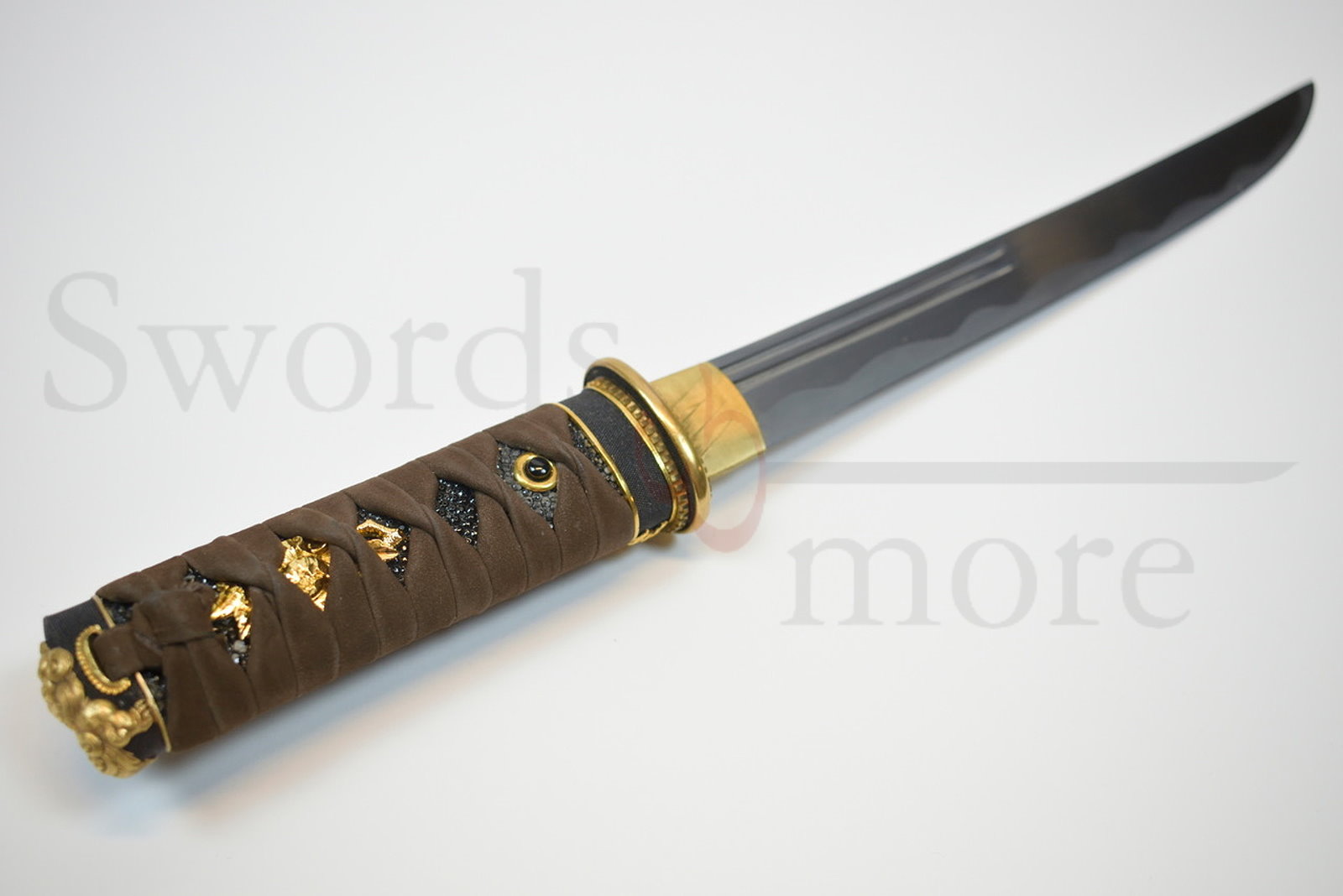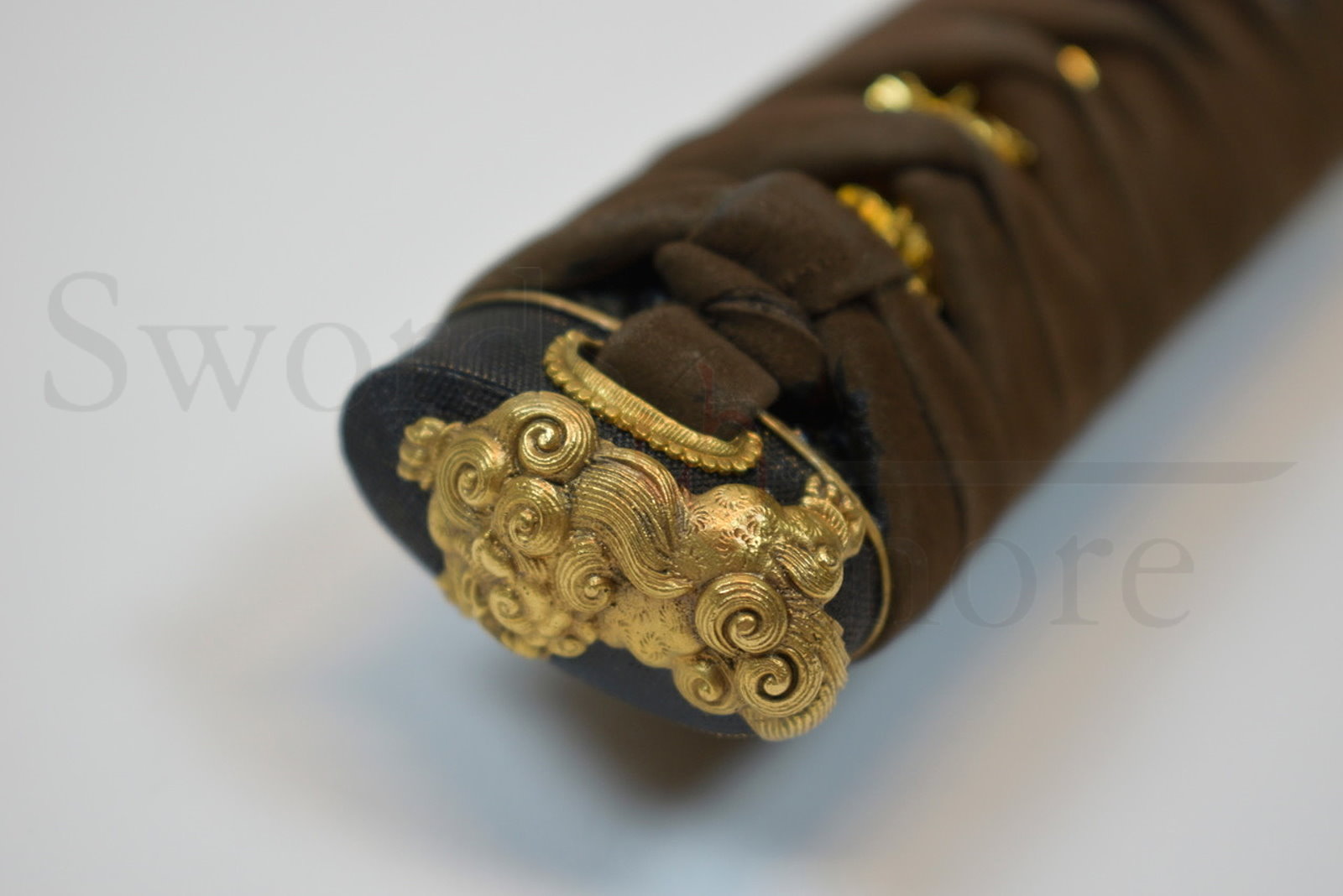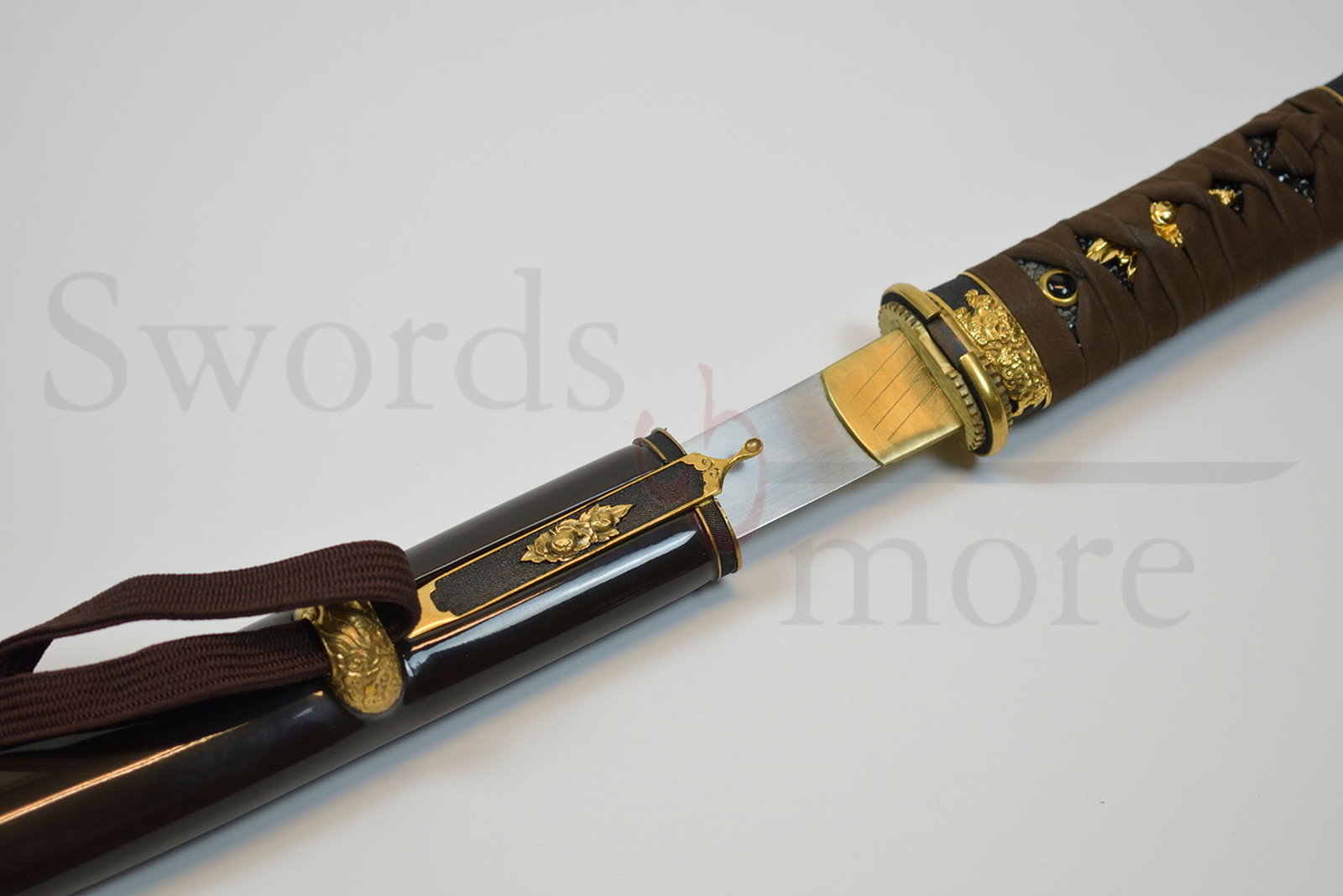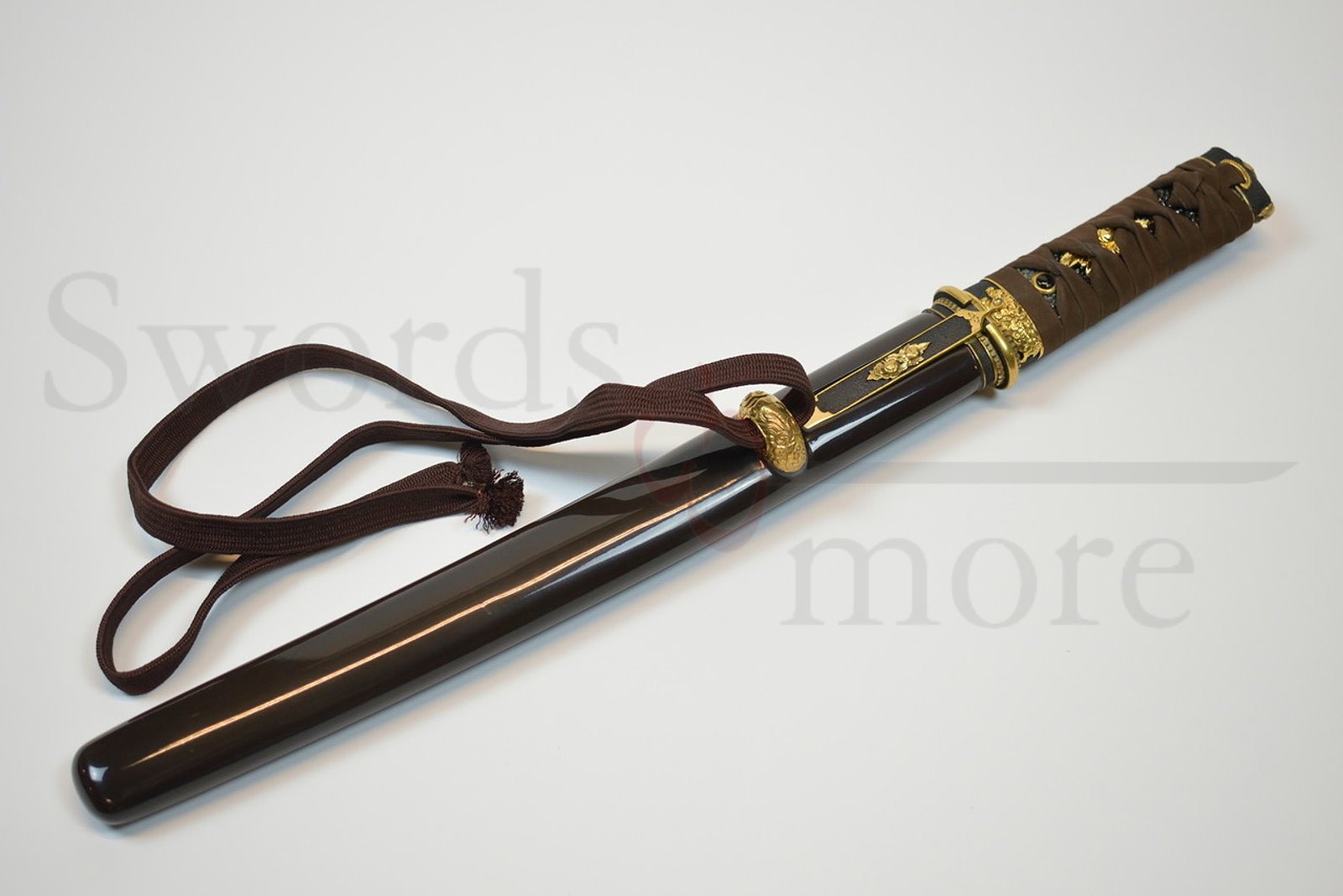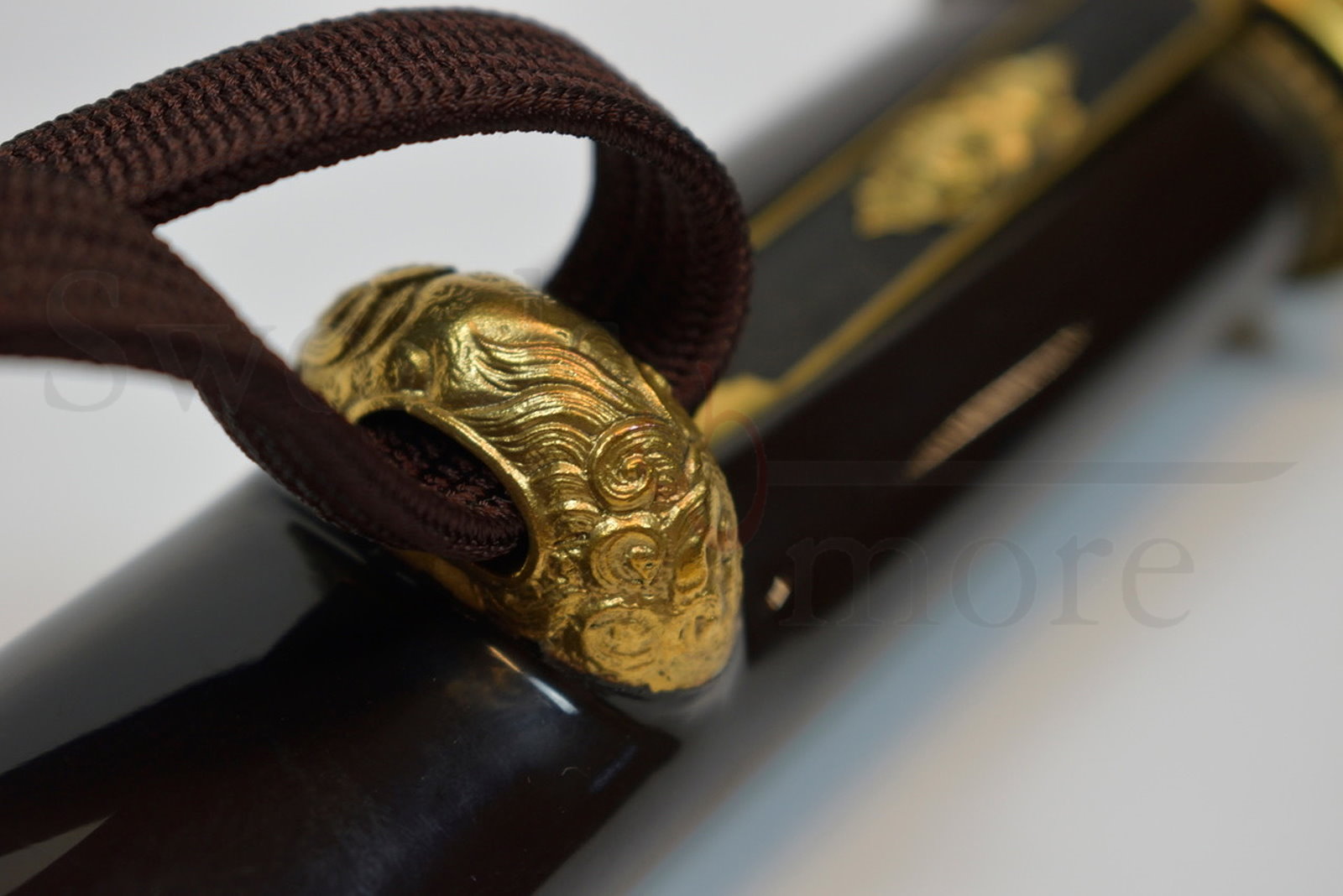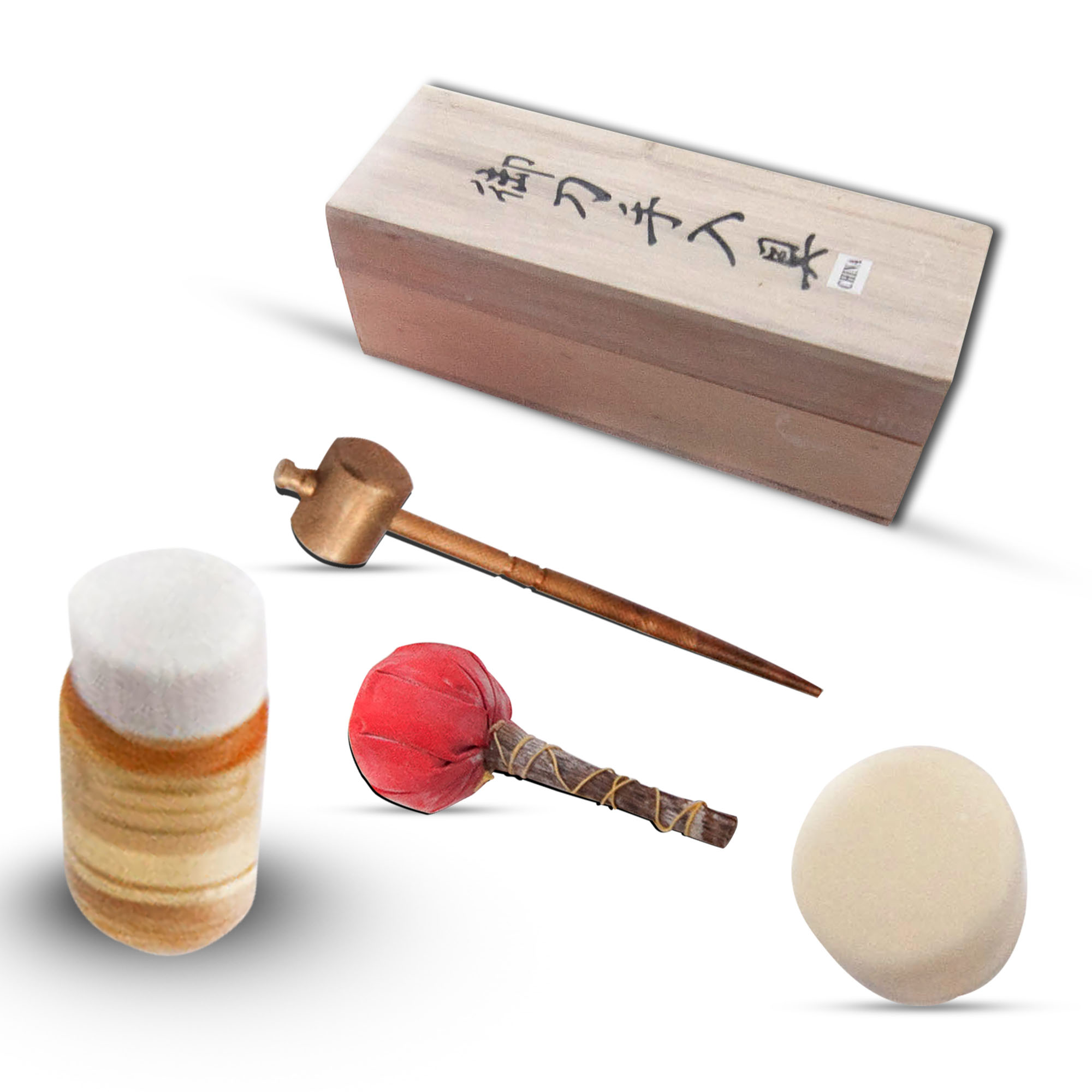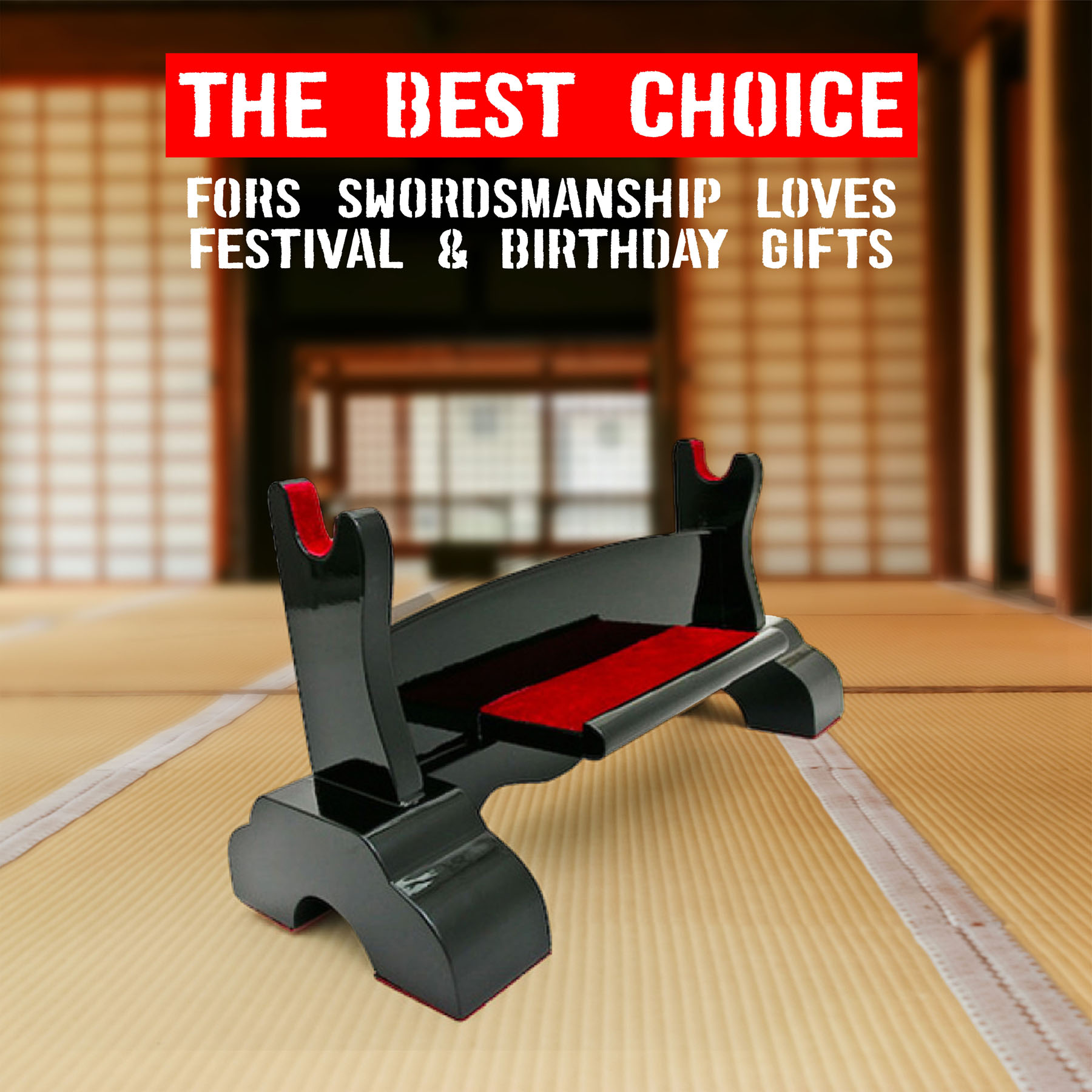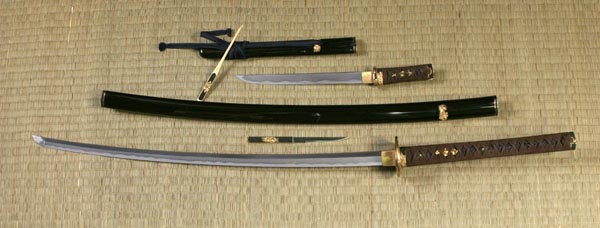€1,899.00*
Item is normally available in about 10-12 weeks.
ATTENTION: Proof of age required!
No sale to persons under 18 years!
Product number:
11852
P
You get 1899 bonus points for this order
Product information "Shi-Shi/Liondog Tanto"
Bugei is pleased to announce the reintroduction of an all new Lion Dog Koshirae - a matched set with a daito and tanto with the most intricate and elegant fittings Bugei has ever produced.
The original Lion Dog was a favorite sword of many of Bugei's customers, but in the long run it was too difficult to produce reliably and we needed to focus on improving the core line of Bugei's swords.
In the intervening years Bugei has been at the forefront in pushing new sword designs and improvements through Hanwei. Bugei went so far as to fly top ranked Japanese Sword Art instructors as well as professional sword polishers and koshirae craftsmen to China to help train the Japanese sword craftsmen at Hanwei. With the improvements we saw as a result of those efforts we decided to revisit the original idea behind the original Lion Dog koshirae. We thought of bringing it back as a "classic" design, but with all of the improvements seen from Paul Chen's Hanwei forge we decided it was time to challenge Hanwei to make their best sword ever. So we redesigned the koshirae, added kogatana and kogai, and really pushed the envelope for production swords. Hanwei was up to the challenge.
The production sword market has grown greatly in the last 5-10 years. Many swords are haphazard at best in terms of shaping and style. We decided that if we were to reintroduce the Lion Dog koshirae we would completely redesign the concept.
The "golden age" of the Japanese sword was Kamakura era of Japanese history. The very greatest names in Japanese sword history were working across Japan making fierce weapons that today are considered to be virtually priceless works of art. Many of these blades were deeply curved for use as tachi. As usage changed to katana style thrust through the obi on the warrior's side these magnificent blades were shortened. This created a very distinctive look to the curvature of the sword and basically defined what was "correct" for the rest of sword history.
So we decided to focus on the period of history when the sword was first being worn through the obi. As a result we decided to produce the Lion Dog set as a daisho with the short sword being a tanto rather than the wakizashi to reflect the times we were representing. Next we went to the books on the great smiths of history. We chose a long sword (daito) and a tanto (shoto) by the great smith Masamune as the models for the shape, dimensions, and overall "feel" of the Lion Dog daisho. Masamune was considered to be one of the greatest, if not the greatest, smiths of Japanese sword history.
His influence on the Japanese sword was profound and widely felt. His "Ten Famous Students" are themselves considered the innovators and in the highest levels of sword craft historically. So it seemed only natural to select a blade shape based on the work of Masamune. Of course we could never duplicate the wonderous artistry of a master like Masamune, but we wanted to have something absolutely authoritative and representative to base the Lion Dog upon. This goes right down to the two fine grooves carefully carved into the tanto.
The Lion Dog, or shishi, is a very popular motif in the sword arts. With the connotations of protection, power, and truth they were an appealing theme to the warrior. But to be strictly accurate Shishi translates just to "lion." Of course the problem here is there are no lions in Japan. So why did so many temples end up with shishi guarding the gates? Why is the image of the shishi such a powerful image?
Lions were seen in early Buddhist art and were called "foo-dogs" by the Chinese (the dog of the Buddha) or "Lions of Korea" by the Koreans. Often the "foo-dog" was pictured in the presence of the Buddha and was considered to be a powerful guardian. The roar of the lion represented power, protection, authority, truth, and a naturalistic honesty within Buddhist thought.
In the 7th century Buddhism swept into Japan from China and Korea. The Japanese would hae seen paintings and scultures at this time representing these creatures and since they didn't have lions themselves their representations and descriptions would be based somewhat on what they new from art and how the concept was introduced. One version of te shishi was called the Karashishi or "Chinese Lion" probably in part due to the similarity to the facial structure of the Chinese Pekinese dog.
These were often represented with an open mouth. The opem mouth most likely represented the release of bad spirits. Sometimes they would hold a round Buddhist jewel in their open mouth or between their feet which itself represented great power. The Korean shishi was called the Komainu or "Korean Dog." Usually the Komainu shishi has a ferocious expression with a closed mouth for keeping in the good spirits.
The shishi represents great power, strength and authority. There are other themes with the open and closed mouth of in and yo, birth and death, releasing and keeping in, and so forth. Ultimately the shishi is a powerful representation of the "muscle" backing up the truth of Buddhism. As a result in Japan many Buddhist temples will have two shishi guardians at the entrance.
In revisiting the overall koshirae design we decided it was time to bring in things never seen before in production swords. Most production swords are untilitarian in design but there is a rich diversty of mounting styles and options in the world of the Japanese sword. We wanted to build a koshirae representative of the time and style. We designed a kozuka with a functional blade for the katana and a kogai for the tanto. The kozuka, kogai and menuki have a peony design which is traditionally used with the shishi motif.
Important note:
The pictured Katanais not part of the delivery, but you can also find it in our shop under the number:
Shi-Shi / Liondog Katana, 79 cm blade length [11849]
Shi-Shi / Liondog Katana, 75 cm blade length [11850]
Shi-Shi / Liondog Katana, 72 cm blade length [11851]
The original Lion Dog was a favorite sword of many of Bugei's customers, but in the long run it was too difficult to produce reliably and we needed to focus on improving the core line of Bugei's swords.
In the intervening years Bugei has been at the forefront in pushing new sword designs and improvements through Hanwei. Bugei went so far as to fly top ranked Japanese Sword Art instructors as well as professional sword polishers and koshirae craftsmen to China to help train the Japanese sword craftsmen at Hanwei. With the improvements we saw as a result of those efforts we decided to revisit the original idea behind the original Lion Dog koshirae. We thought of bringing it back as a "classic" design, but with all of the improvements seen from Paul Chen's Hanwei forge we decided it was time to challenge Hanwei to make their best sword ever. So we redesigned the koshirae, added kogatana and kogai, and really pushed the envelope for production swords. Hanwei was up to the challenge.
The production sword market has grown greatly in the last 5-10 years. Many swords are haphazard at best in terms of shaping and style. We decided that if we were to reintroduce the Lion Dog koshirae we would completely redesign the concept.
The "golden age" of the Japanese sword was Kamakura era of Japanese history. The very greatest names in Japanese sword history were working across Japan making fierce weapons that today are considered to be virtually priceless works of art. Many of these blades were deeply curved for use as tachi. As usage changed to katana style thrust through the obi on the warrior's side these magnificent blades were shortened. This created a very distinctive look to the curvature of the sword and basically defined what was "correct" for the rest of sword history.
So we decided to focus on the period of history when the sword was first being worn through the obi. As a result we decided to produce the Lion Dog set as a daisho with the short sword being a tanto rather than the wakizashi to reflect the times we were representing. Next we went to the books on the great smiths of history. We chose a long sword (daito) and a tanto (shoto) by the great smith Masamune as the models for the shape, dimensions, and overall "feel" of the Lion Dog daisho. Masamune was considered to be one of the greatest, if not the greatest, smiths of Japanese sword history.
His influence on the Japanese sword was profound and widely felt. His "Ten Famous Students" are themselves considered the innovators and in the highest levels of sword craft historically. So it seemed only natural to select a blade shape based on the work of Masamune. Of course we could never duplicate the wonderous artistry of a master like Masamune, but we wanted to have something absolutely authoritative and representative to base the Lion Dog upon. This goes right down to the two fine grooves carefully carved into the tanto.
The Lion Dog, or shishi, is a very popular motif in the sword arts. With the connotations of protection, power, and truth they were an appealing theme to the warrior. But to be strictly accurate Shishi translates just to "lion." Of course the problem here is there are no lions in Japan. So why did so many temples end up with shishi guarding the gates? Why is the image of the shishi such a powerful image?
Lions were seen in early Buddhist art and were called "foo-dogs" by the Chinese (the dog of the Buddha) or "Lions of Korea" by the Koreans. Often the "foo-dog" was pictured in the presence of the Buddha and was considered to be a powerful guardian. The roar of the lion represented power, protection, authority, truth, and a naturalistic honesty within Buddhist thought.
In the 7th century Buddhism swept into Japan from China and Korea. The Japanese would hae seen paintings and scultures at this time representing these creatures and since they didn't have lions themselves their representations and descriptions would be based somewhat on what they new from art and how the concept was introduced. One version of te shishi was called the Karashishi or "Chinese Lion" probably in part due to the similarity to the facial structure of the Chinese Pekinese dog.
These were often represented with an open mouth. The opem mouth most likely represented the release of bad spirits. Sometimes they would hold a round Buddhist jewel in their open mouth or between their feet which itself represented great power. The Korean shishi was called the Komainu or "Korean Dog." Usually the Komainu shishi has a ferocious expression with a closed mouth for keeping in the good spirits.
The shishi represents great power, strength and authority. There are other themes with the open and closed mouth of in and yo, birth and death, releasing and keeping in, and so forth. Ultimately the shishi is a powerful representation of the "muscle" backing up the truth of Buddhism. As a result in Japan many Buddhist temples will have two shishi guardians at the entrance.
In revisiting the overall koshirae design we decided it was time to bring in things never seen before in production swords. Most production swords are untilitarian in design but there is a rich diversty of mounting styles and options in the world of the Japanese sword. We wanted to build a koshirae representative of the time and style. We designed a kozuka with a functional blade for the katana and a kogai for the tanto. The kozuka, kogai and menuki have a peony design which is traditionally used with the shishi motif.
Important note:
The pictured Katanais not part of the delivery, but you can also find it in our shop under the number:
Shi-Shi / Liondog Katana, 79 cm blade length [11849]
Shi-Shi / Liondog Katana, 75 cm blade length [11850]
Shi-Shi / Liondog Katana, 72 cm blade length [11851]
Login
Manufacturerinformation (GPSR)
Swords and more GmbH
Liebigstrasse 2-20
22113 Hamburg
Deutschland
0049 40 36164963
info@swords-and-more.com


